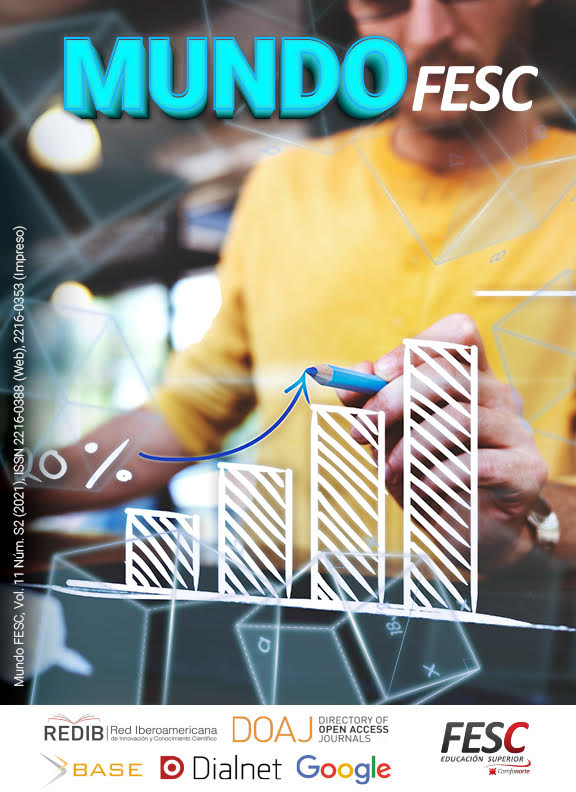Características fisicoquímicas de los ladrillos refractarios usados en hornos de la industria cerámica del oriente colombiano
DOI:
https://doi.org/10.61799/2216-0388.973Palabras clave:
cerámicos, eficiencia térmica, horno colmena, propiedades tecnológicasResumen
Se analiza las principales características de los ladrillos refractarios que se emplean en la construcción de hornos de llama invertida (colmena) utilizados en la industria ladrillera presentes en el área metropolitana de Cúcuta. Se analizaron 2 materiales fabricados en la región (CUC-1 y CUC-2). La caracterización contempló análisis mediante difracción y fluorescencia de rayos X, microscopía electrónica de barrido y microquímica, dilatometría, conductividad térmica, resistencia piroscópica (conos de fusión), resistencia a la compresión, porcentaje de absorción de agua y análisis de dimensiones. Los resultados obtenidos muestran que gran parte de los materiales analizados se caracterizan por tener una alta concentración de cuarzo en su composición (entre 48% y 65%), una muy baja presencia de fases ricas en aluminio como la alúmina (no identificada) y la mullita (<2%), las cuales son relevantes en este tipo de aplicaciones. El contenido de aluminio se encuentra entre 16,55% y 17,99% con mayor contenido en CUC-2. En cuanto a la resistencia piroscópica se evidencia que los dos materiales tienen temperatura de ablandamiento inferior a 1400°C con CUC-2>CUC-1. La conductividad térmica estuvo entre 0,7367 y 0,7404 W/m.K, dejando ver una baja aplicabilidad como aislante de estos materiales. Los cambios dilatométricos son más marcados en CUC-1 que en CUC-2 situación que fue asociada a más bajas temperaturas de cocción de esto ladrillos.
Descargas
Referencias
J. Sánchez, J. Gelves and Y- Romero-Arcos, “Caracterización tecnológica y del talento humano de las empresas fabricantes de cerámica roja ubicadas en el área metropolitana de Cúcuta”, Respuestas, vol. 17, no. 2, pp. 71-80, 2012. https://doi.org/10.22463/0122820X.423
Unidad de Planeación Minero-energética, "Estudio de producción de coque y carbón metalúrgico, usos y comercialización", Bogotá: editorial de la UPME, 2012. [En línea]. Disponible: https://bdigital.upme.gov.co/handle/001/1107?mode=full.
J. Díaz y J. Sánchez J, Introducción a los hornos utilizados en la industria cerámica tradicional, Cúcuta: Editorial Universidad Francisco de Paula Santander, 2011
J. Díaz, J. Sánchez and J. Prato, “Energy-Environmental diagnosis of the ceramic sector companies in the metropolitan area of Cucuta, Norte de Santander, Colombia”, Key Engineering Materials, vol. 663, pp. 133-139, 2016. Doi:10.4028/www.scientific.net/KEM.663.133
C. Bustos y Y. Guevara, "Evaluación comparativa técnica, económica y ambiental de hornos colmena utilizando como combustible carbón, fuel Oil, gas natural y el nuevo combustible tipo CCTA", undergraduate thesis, Cúcuta: Universidad Francisco de Paula Santander, Cúcuta, Colombia, 2007
E. Vera, "Modelación de la Presión y Velocidad en el Proceso de Combustión de un Horno tipo Colmena", M.S. Thesis, San Cristobal: Universidad Nacional experimental del Táchira, 2005
F. Medall, "Mecanismo de la formación y cinética de la oxidación del corazón negro durante la cocción de piezas cerámicas", Ph. D. dissertation, Valencia: Universitat de Valencia,1989
D. A. Brosnan, Alumina-Silica Brick, in Refractories handbook. Londres: Editorial Taylor & Francis Group, 2004
International Organization for Standardization, "Plastics — termination of thermal conductivity and thermal diffusivity — Part 2: Transient plane heat source (hot disc) method", First edition, 2008. [En línea]. Disponible en: https://www.iso.org/standard/40683.html
American Society for Testing and Materials, "ASTM C24 – 09, Standard Test Method for Pyrometric Cone Equivalent (PCE) of Fireclay and High-Alumina Refractory Materials,West Conshohocken: ASTM", 2018. [En línea]. Disponible en: https://tienda.aenor.com/norma-astm-c24-09-067967
Instituto colombiano de normas técnicas y certificación, "NTC 682 Refractarios. Método de ensayo para determinar la resistencia a la compresión en frio y el módulo de ruptura de refractarios", Bogotá: Icontec 2015. [En línea]. Disponible en: https://tienda.icontec.org/gp-refractarios-metodo-de-ensayo-para-determinar-la-resistencia-a-la-compresion-en-frio-y-el-modulo-de-ruptura-de-refractarios-ntc682-2000.html
American Society for Testing and Materials, "ASTM C20– 00 Standard Test Methods for Apparent Porosity, Water Absorption, Apparent Specific Gravity, and Bulk Density of Burned Refractory Brick and Shapes by Boiling Water, West Conshohocken: ASTM", 2015. [En línea]. Disponible en: https://tienda.aenor.com/norma-astm-c20-00-001490
Instituto Colombiano de Normas Técnicas y Certificación, "NTC 773 Clasificación de ladrillos refractarios de arcilla refractaria (silicoaluminosos o de baja alúmina) y de alta alúmina", Bogotá: Icontec, 2018. [En línea]. Disponible en: https://tienda.icontec.org/gp-clasificacion-de-ladrillos-refractarios-de-arcilla-refractaria-silicoaluminosos-o-de-baja-alumina-y-de-alta-alumina-ntc773-2018.html
Compañía Gamma-Erecos, "Catálogo cerámica roja", [En línea]. Disponible en: https://www.gamma.com.co/catybro_refractarios/
R. Inoriza, “Introducción a los materiales refractarios”, Técnica Industrial, vol. 248, no. 54, 2003
A. X. Moreno Erazo, "Obtención tecnológica de mullita a partir de arcillas y caolines refractarios argentinos, y alúmina calcinada o alúminas hidratadas", Doctoral dissertation, Buenos Aires: Universidad Nacional de La Plata, 2014
D. Álvarez-Rozo, J. Sánchez-Molina and J. F. Gelves, “Influence of raw materials and forming technique in the manufacture of stoneware ceramic”, Ingeniería y competitividad, vol. 19, no. 2, pp. 93-105, 2017
S. P. Chaudhuri, “A Review on the Kaolinite-Mullite Transformation”, Transactions of the Indian Ceramic Society, vol. 36, no. 4, pp. 71-81, 1977
J. García et al.,“Thermal conductivity de traditional ceramics, part II, influence de mineralogical composition”, Ceramics international, vol. 36, pp. 2017-2024, 2010. Doi:10.1016/j.ceramint.2010.05.013
M. Lassinantti, A. Gualtieri, S. Gagliardi, P. Ruffini, R. Ferrari, M. Hanuskova, “Thermal conductivity of fired clays: Effects of mineralogical and physical properties of the raw materials”, Applied Clay Science , vol. 49, pp. 269–275, 2010. Doi:10.1016/j.clay.2010.06.002
A.S Gray, C. Uher, “Thermal conductivity of mica at low temperatures”, Journal of Materials Science, vol. 12, no. 5, pp. 959-965, 1977
J. P Holman, J. P. Heat, Transfer, 9th Edition, Boston: McGraw-Hill International Book Company, 2002
Descargas
Publicado
Número
Sección
Licencia

Esta obra está bajo una licencia internacional Creative Commons Atribución-NoComercial 4.0.






